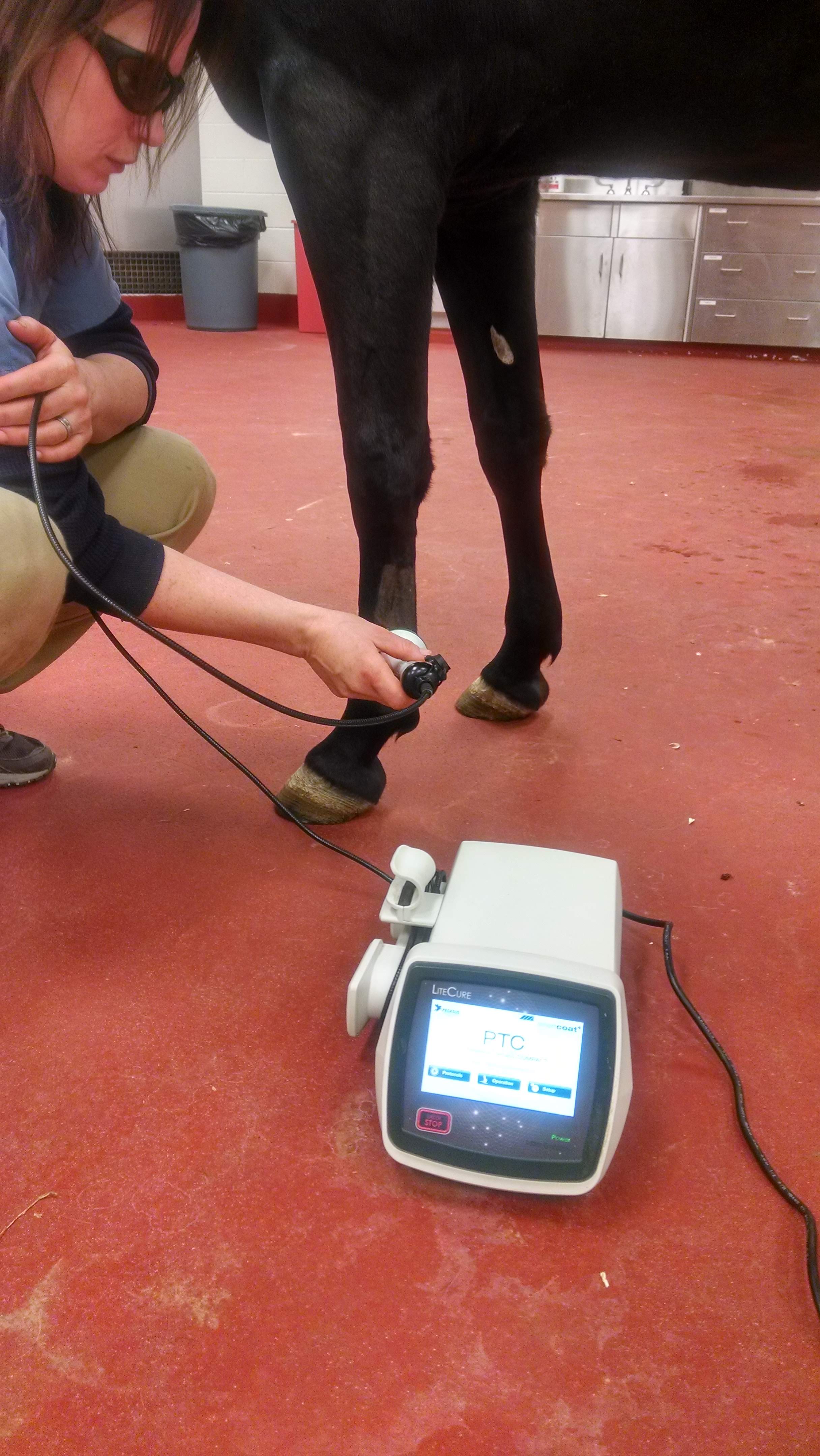Why Equine Therapy is Coming To Be a Preferred Choice for Emotional Wellness
Why Equine Therapy is Coming To Be a Preferred Choice for Emotional Wellness
Blog Article
Evaluating the Performance of Laser Therapy in Equine Treatment for Injury Rehabilitation
The examination of laser treatment's efficiency in equine injury recovery pivots on numerous variables, consisting of recovery time, pain mitigation, and tissue regrowth. Professional research studies suggest notable enhancements in conditions like tendonitis and osteoarthritis, credited to improved mobile function and elevated ATP production. Veterinarians frequently observe exceptional results with laser therapy compared to standard approaches, placing it as a crucial component in equine care. However, the need for constant monitoring and customized therapy plans can not be overemphasized. What particular scientific proof sustains these claims, and just how do vets execute these procedures in method?

Understanding Laser Therapy
Laser therapy has become a pivotal tool in vet medicine, especially in the therapy of equine problems. Understood for its non-invasive nature and efficacy, laser treatment entails the application of specific wavelengths of light to boost tissue repair service and minimize swelling. This restorative method is increasingly preferred for its ability to speed up the recovery procedure in horses enduring from a range of bone and joint injuries and chronic problems.
The primary device behind laser therapy is its ability to enhance mobile features. Furthermore, laser therapy advertises vasodilation, boosting blood flow and oxygen delivery to damaged tissues, therefore speeding up recuperation.
In equine medication, laser treatment is especially helpful for problems such as tendonitis, osteoarthritis, and wound healing. The technique is lauded for its pain-relieving homes, allowing equines to gain back flexibility and function more swiftly. Vets additionally appreciate its minimal negative effects compared to various other therapy methods, making it a trusted and risk-free option for equine treatment.
Just How Laser Treatment Functions
To comprehend exactly how laser treatment functions, it is necessary to dig right into the interaction in between light power and biological tissues. Laser treatment, likewise called Low-Level Laser Therapy (LLLT) or photobiomodulation, uses specific wavelengths of light to permeate cells and boost cellular processes. The system rests on the absorption of photons by cell chromophores, mainly within the mitochondria, which are critical for energy manufacturing.
Upon absorption, these photons set off a collection of biochemical changes, boosting mitochondrial function and resulting in raised adenosine triphosphate (ATP) production. This rise in ATP speeds up mobile metabolic process, advertising tissue repair work and regeneration. In addition, laser treatment modulates inflammatory reactions by impacting cytokine degrees and minimizing oxidative anxiety, thus reducing pain and swelling.
Another substantial element of laser treatment is its function in enhancing microcirculation. The treatment promotes vasodilation, improving blood circulation and oxygen distribution to damaged tissues. This promotes the removal of cellular particles and sustains the spreading of fibroblasts and collagen synthesis, critical for wound recovery.
Professional Proof
The effectiveness of laser therapy in equine treatment has actually been substantiated via different medical research studies, showcasing its restorative possible image source across an array of problems. A study performed by Turner et al. (2012) demonstrated that horses treated with low-level laser treatment (LLLT) for tendon injuries displayed accelerated recovery compared to those obtaining traditional treatments.
Likewise, study by Johnson and coworkers (2015) concentrated on equine muscle mass injuries, disclosing that laser therapy dramatically expedited muscular tissue fiber regeneration and minimized muscle mass stiffness. These findings were affirmed by histological analyses revealing improved muscle mass cells organization. Furthermore, scientific evaluations have shown that laser treatment can reduce chronic conditions such as osteo arthritis. A research study by Smith et al. (2018) reported that steeds with osteoarthritic joints experienced remarkable pain alleviation and boosted series of activity complying with a regimen of laser treatment sessions.
Vet Insights
Vet specialists have significantly recognized the worth of laser treatment in equine treatment, mentioning both empirical evidence and firsthand experience. Dr. Jane Smith, a leading equine veterinarian, notes that laser treatment has shown amazing efficacy in lowering inflammation and accelerating cells repair work.
Veterinarians likewise value the convenience of laser treatment. It can be utilized for a large range of conditions, from surface injuries to deeper bone and joint injuries. Dr. Emily Brown highlights its utility in dealing with conditions like tendonitis and osteoarthritis, where traditional therapies usually fail. She explains that laser therapy can be customized to the particular demands of each equine, ensuring ideal results.

Practical Considerations
A key facet of implementing laser treatment in equine treatment involves understanding the sensible factors to consider that guarantee its efficacy and safety. Primarily, it is critical to select the suitable laser device, as various kinds differ in wavelength, power, and infiltration deepness. Veterinarians have to be well-versed in these specifications to tailor therapy protocols efficiently to each injury kind
Moreover, the regularity and duration of laser treatment sessions require mindful planning to make best use of therapeutic benefits while decreasing any type of prospective damaging effects. Constant tracking of the equine's action to therapy can direct required modifications in the therapy regimen. Establishing a risk-free and controlled atmosphere during treatments is likewise important to avoid unexpected exposure to laser discharges, which can hurt both the horse and the trainer.
Training and qualification of employees carrying out laser treatment are paramount to make sure proper method and to promote safety criteria. Furthermore, maintaining precise documents of each session, including laser setups and observed outcomes, browse around this web-site is crucial for evaluating the total performance of the therapy and for making data-driven decisions.
Verdict
Laser therapy has actually arised as an efficient technique in equine injury rehabilitation, offering substantial advantages in healing time, discomfort relief, and tissue recovery. Scientific studies emphasize significant renovations in problems such as tendonitis and osteoarthritis, associated to enhanced mobile function and raised ATP manufacturing. Veterinarian monitorings substantiate these searchings for, highlighting exceptional end results compared to standard therapies. For ideal outcomes, continuous tracking and individualized therapy methods stay crucial in leveraging the complete capacity of laser treatment in equine treatment.
Report this page